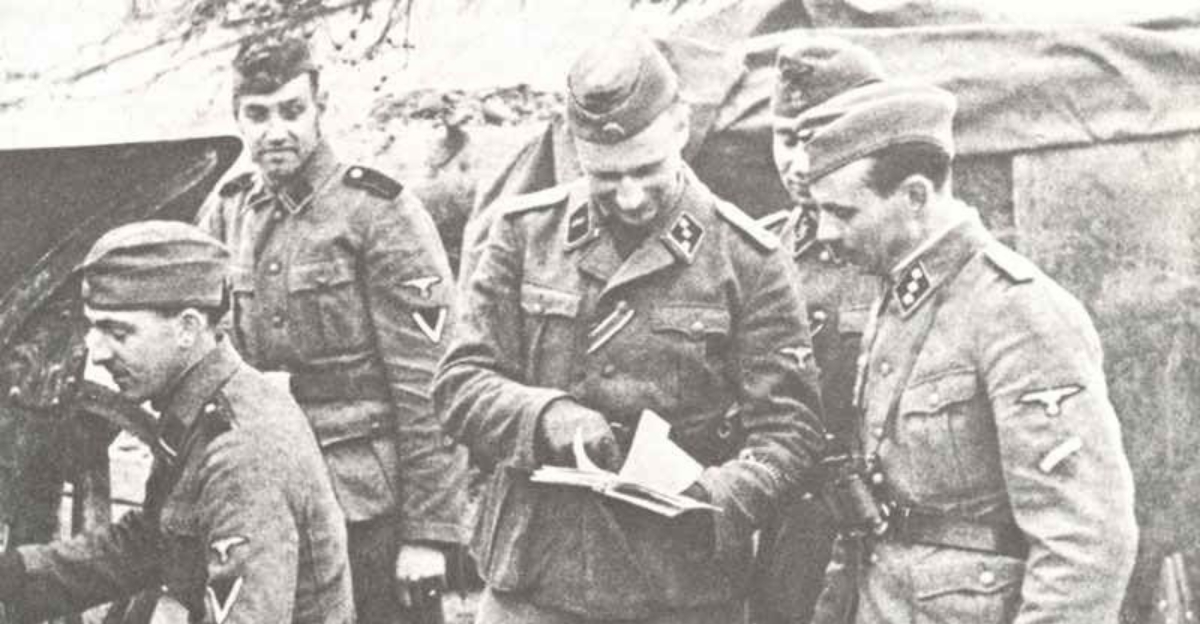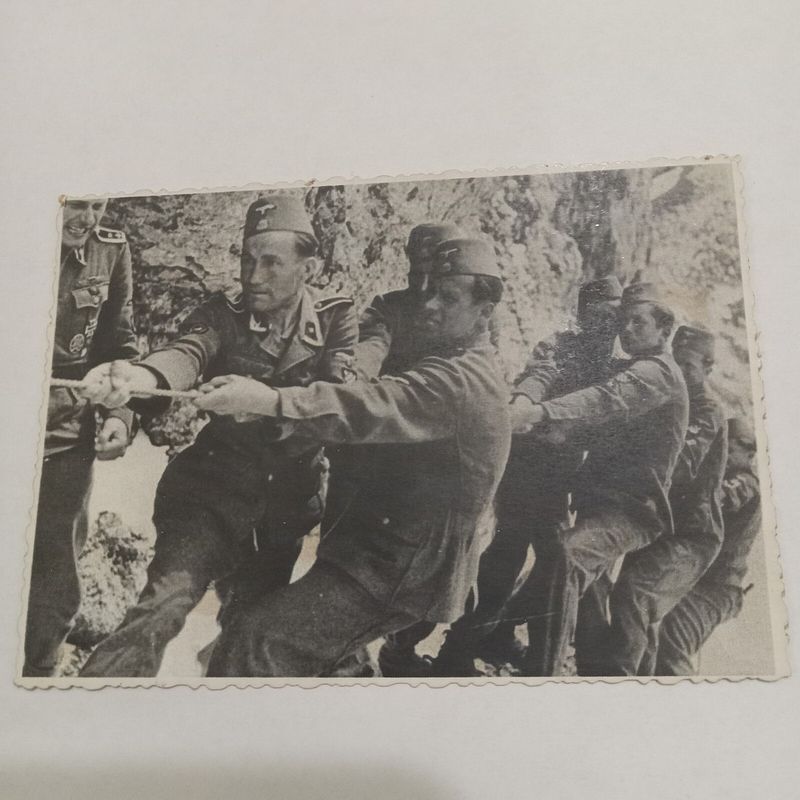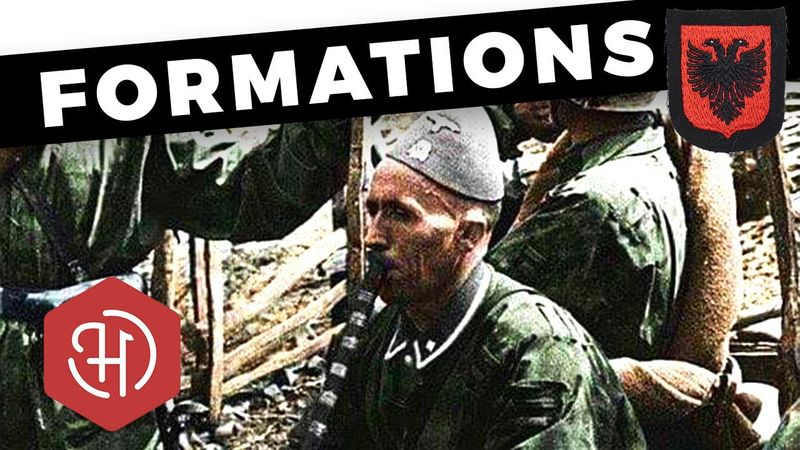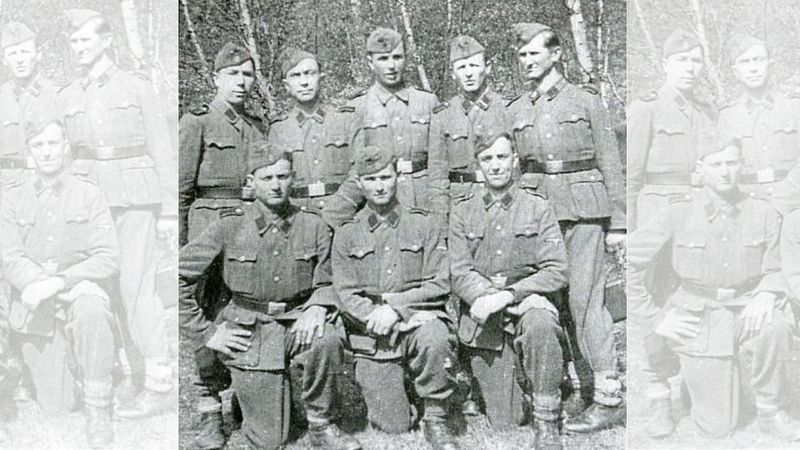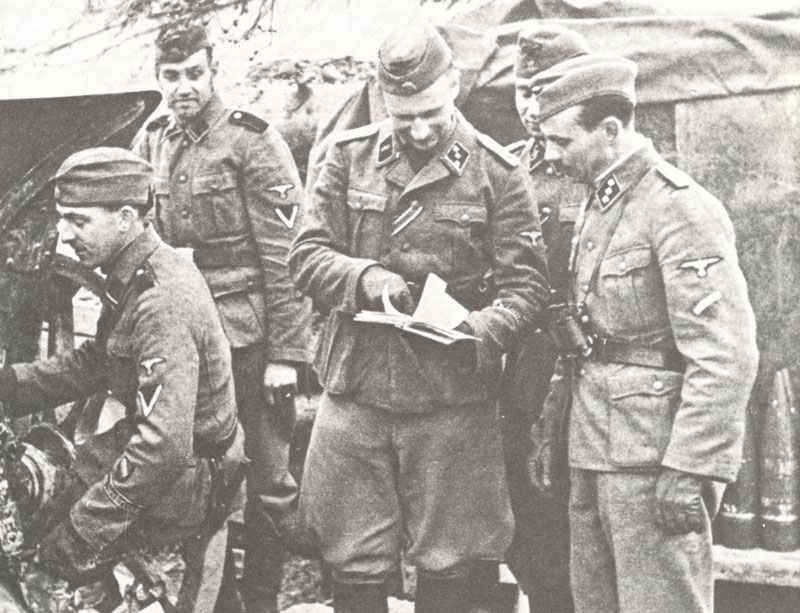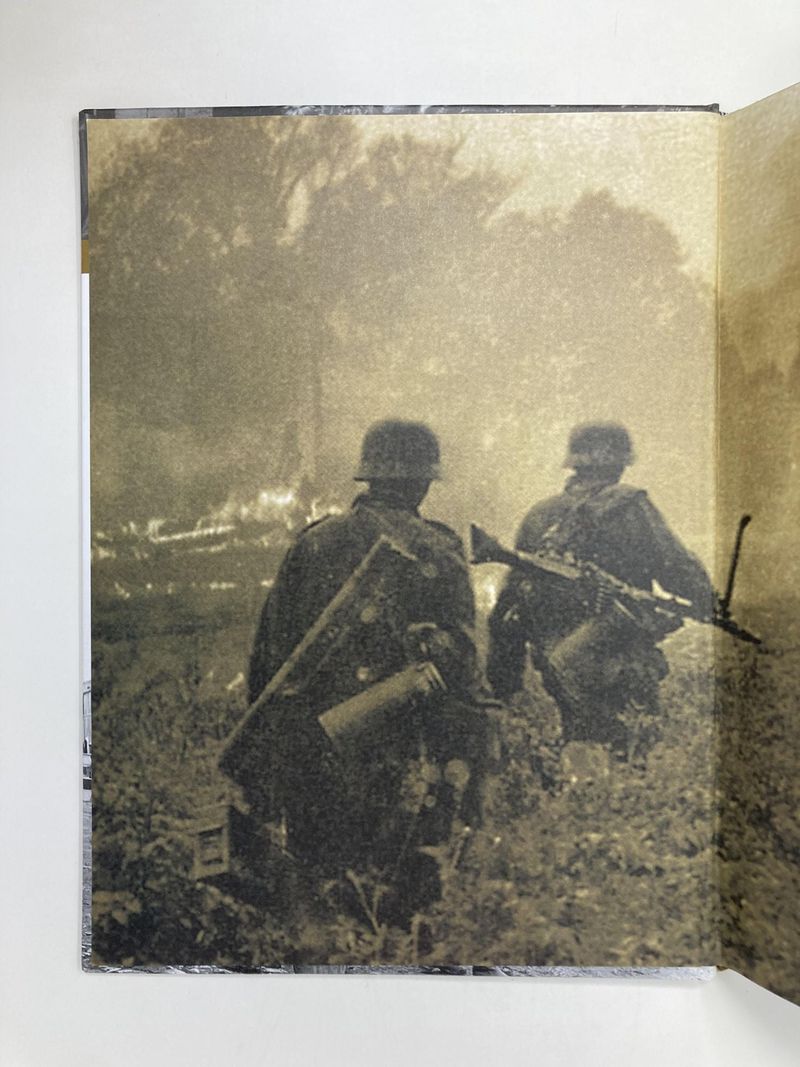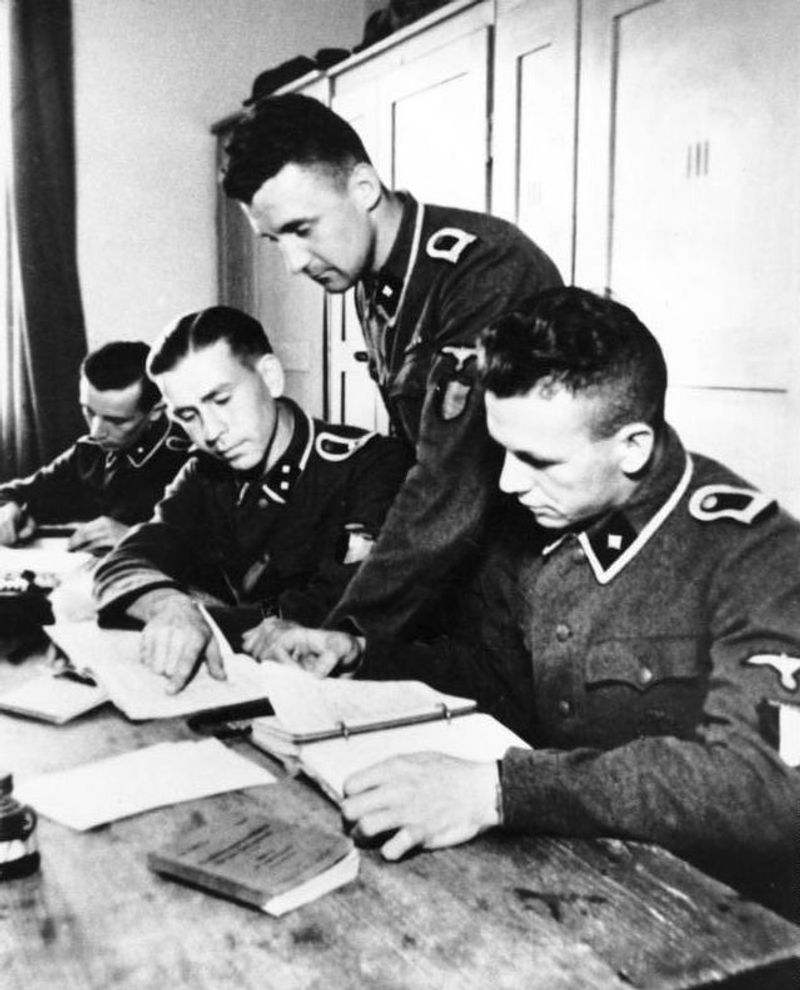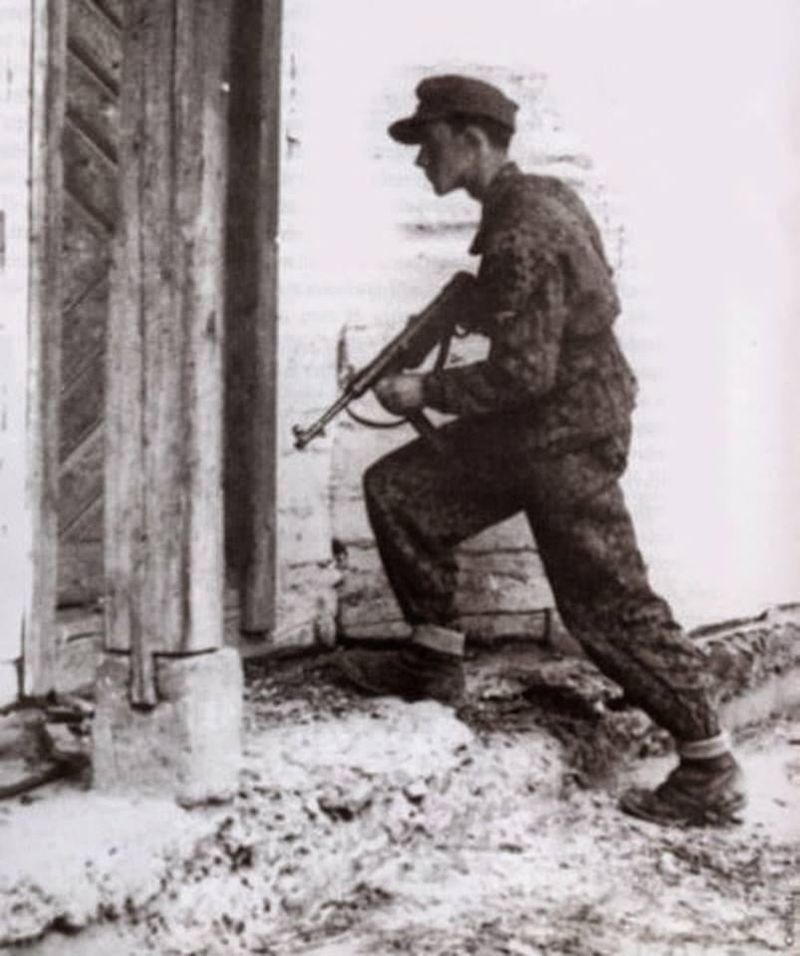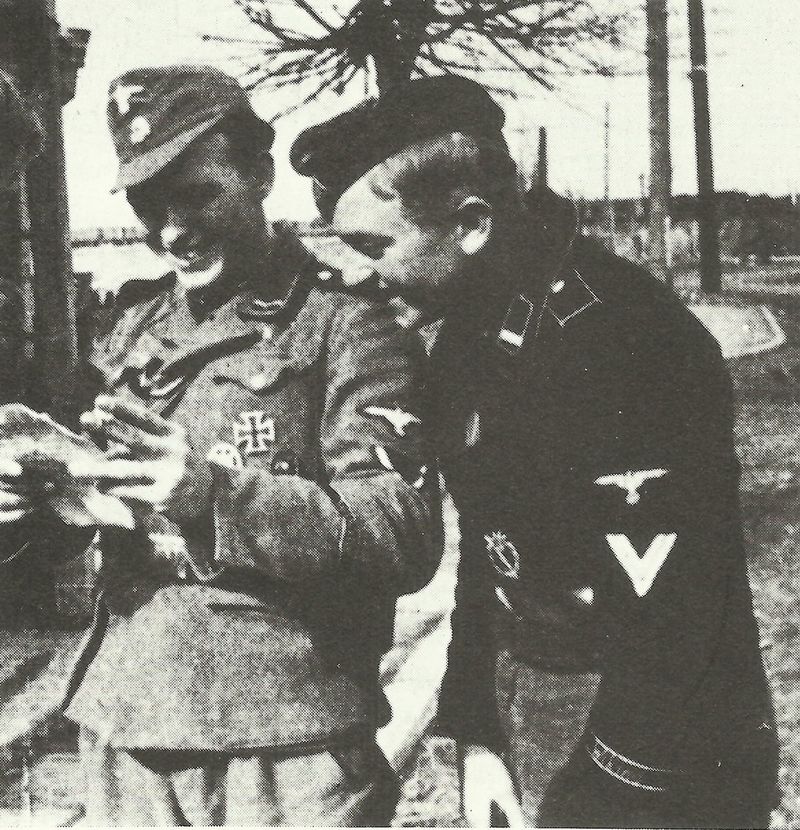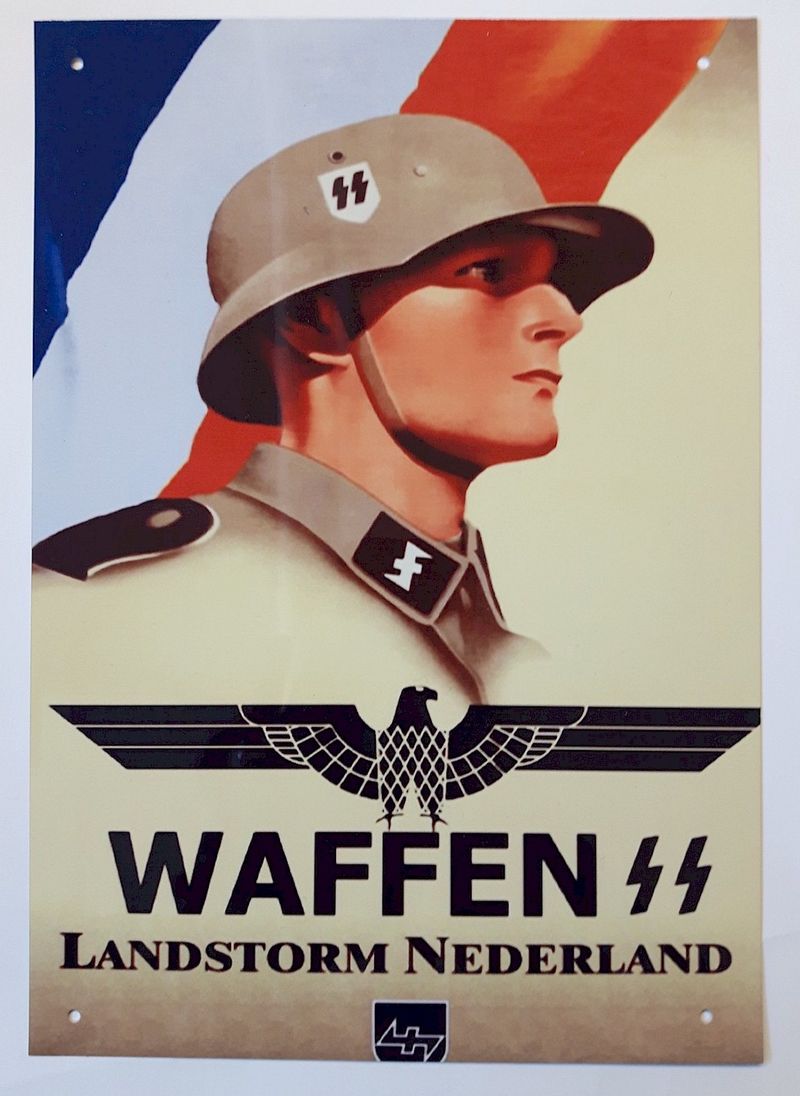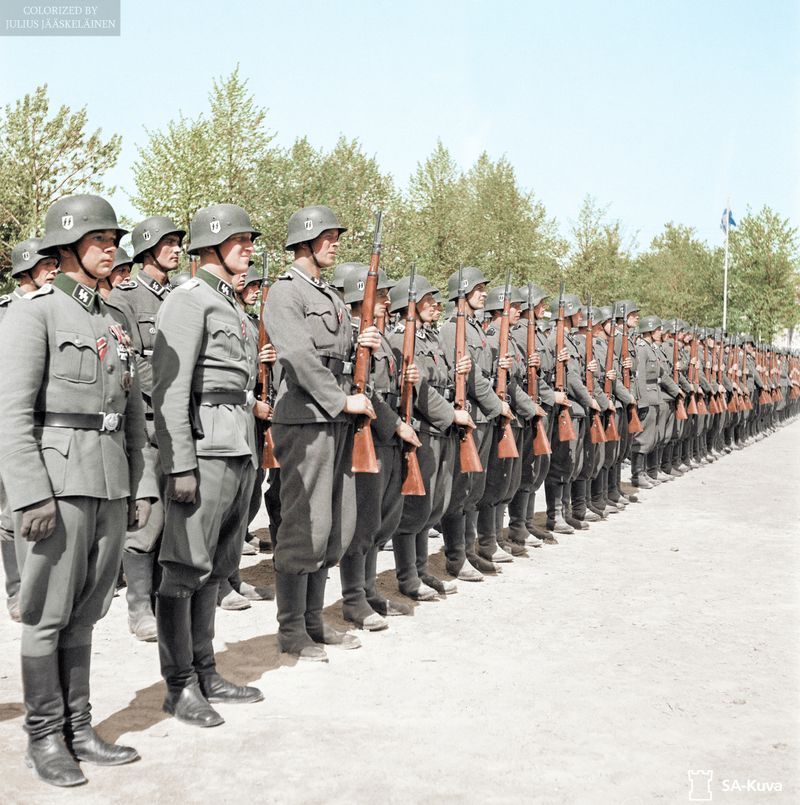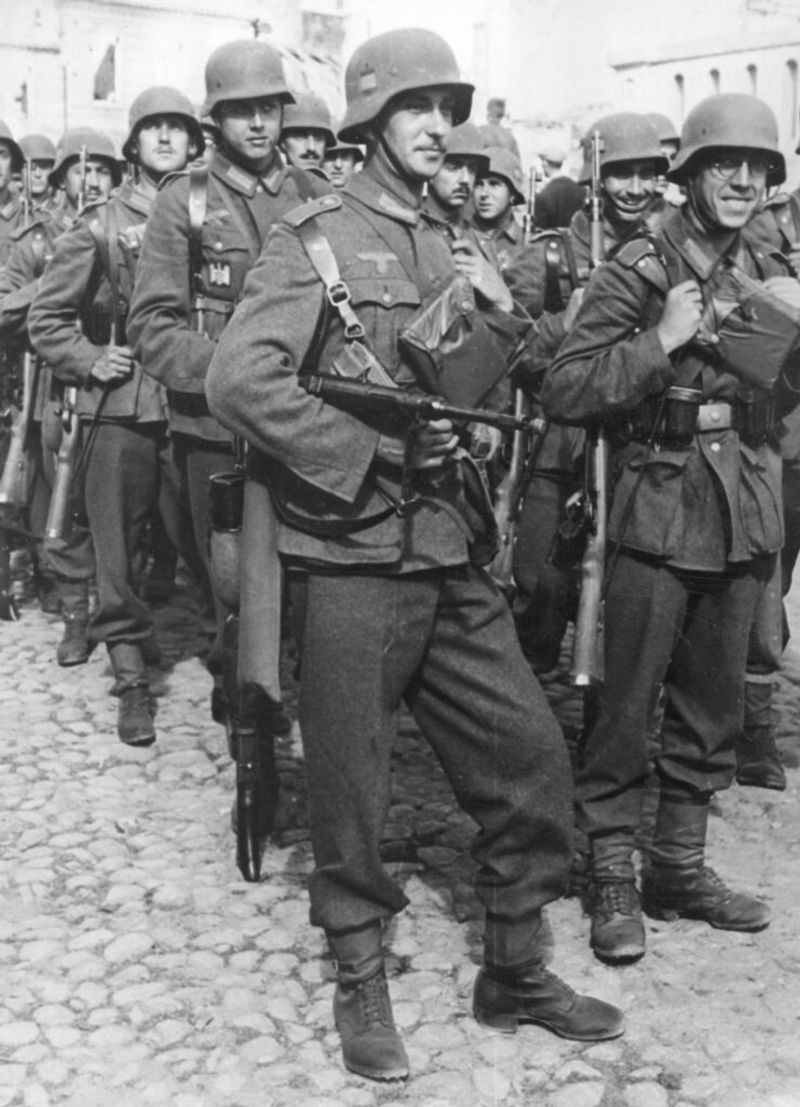During World War II, thousands of non-German volunteers joined the Waffen-SS to fight alongside Nazi forces. These foreign legions came from across Europe, driven by various motivations including anti-communist beliefs, nationalism, and promises of independence.
Many of these units committed serious war crimes and participated in brutal campaigns on the Eastern Front.
Understanding their stories reveals the complex web of collaboration that extended far beyond Germany’s borders during the darkest period of the 20th century.
1. 13th Waffen Mountain Division “Handschar” (1st Croatian)
Picture mountain fighters wearing distinctive fez caps – that was the Handschar Division, one of the most unusual SS units ever formed. Composed primarily of Bosnian Muslims and Catholic Croats, this division emerged from the complex ethnic tensions of the Balkans during wartime.
The unit specialized in anti-partisan warfare throughout Yugoslavia, fighting against Tito’s communist resistance forces. Their name “Handschar” means scimitar in Turkish, reflecting their Islamic heritage and warrior traditions.
Despite initial German hopes, the division faced numerous desertions and internal conflicts. Many volunteers had joined expecting to fight only communists, not realizing they would become part of the SS apparatus responsible for widespread atrocities across the region.
2. 21st Waffen Mountain Division “Skanderbeg” (Albanian)
Named after Albania’s medieval hero, the Skanderbeg Division recruited heavily from ethnic Albanians in Kosovo and Albania proper. German promises of a “Greater Albania” attracted many volunteers who saw Nazi collaboration as a path to national independence.
The division became notorious for its brutal treatment of Serbian civilians, participating in ethnic cleansing operations throughout Kosovo. Their actions created lasting hatred between Albanian and Serbian communities that would resurface decades later.
Military effectiveness remained questionable throughout their existence. High desertion rates and poor discipline plagued the unit, leading German commanders to question the wisdom of arming Albanian volunteers. Most members fled or switched sides as German forces retreated from the Balkans in 1944.
3. 14th Waffen Grenadier Division “Galicia” (1st Ukrainian)
Ukrainian nationalism met German opportunism when the Galicia Division formed in 1943. Thousands of Western Ukrainian volunteers enlisted, hoping to fight Soviet communism and eventually achieve Ukrainian independence under German protection.
Their baptism of fire came at the Battle of Brody in 1944, where Soviet forces nearly destroyed the entire division. Only a few hundred survivors escaped the devastating encounter, forcing complete reorganization and retraining.
The unit’s legacy remains controversial in modern Ukraine. Some view these men as freedom fighters against Soviet oppression, while others condemn their collaboration with Nazi Germany. Political debates about their historical role continue to divide Ukrainian society today, reflecting unresolved questions about wartime choices and national identity.
4. 15th & 19th Waffen Grenadier Divisions (Latvian Legion)
Latvia’s tragic history took another dark turn when over 87,000 men joined these twin divisions. Many volunteers genuinely believed they were defending their homeland against Soviet reoccupation rather than serving Nazi ideology.
Both divisions fought desperately in the Courland Pocket, where German forces held out until war’s end. Their final battles occurred in Berlin itself, where Latvian volunteers defended Hitler’s bunker area against advancing Soviet troops.
The conscription issue complicates their legacy significantly. While some joined voluntarily, many were drafted under German occupation laws. Post-war Soviet persecution of veterans and their families created lasting trauma in Latvian society, with some viewing these men as tragic figures caught between two totalitarian systems.
5. 27th SS Volunteer Grenadier Division “Langemarck” (Flemish Legion)
Flemish nationalism and anti-communist fervor drove Belgian volunteers to join this division named after a World War I battlefield. The unit recruited heavily from Flanders, promising volunteers they would help create an independent Flemish state.
Eastern Front combat proved devastating for these Western European volunteers. Unprepared for the brutal warfare conditions, many Flemish soldiers suffered severe casualties during their first major engagements against seasoned Soviet forces.
The division’s small size meant every loss hit hard. By 1945, only a few hundred original volunteers remained alive and combat-ready. Their sacrifice achieved nothing for Flemish independence, instead leaving Belgium with painful memories of collaboration that poisoned post-war politics for generations.
6. 28th SS Volunteer Grenadier Division “Wallonien” (Walloon Legion)
French-speaking Belgians formed this division under the charismatic leadership of Leon Degrelle, a fascist politician who became one of the war’s most decorated foreign SS officers. His recruiting speeches promised adventure and glory to young Walloons.
The unit fought primarily on the Eastern Front, where they gained respect from German commanders for their fighting ability. Despite their small numbers, they participated in major battles including the defense of the Cherkassy Pocket.
Degrelle’s personal story became legendary among SS circles. He survived multiple wounds and dangerous missions, eventually escaping to Spain after Germany’s defeat. His post-war writings romanticized the Walloon Legion’s service, though they glossed over the unit’s participation in war crimes and civilian massacres.
7. 33rd Waffen Grenadier Division “Charlemagne” (French Legion)
French anti-communists and fascist sympathizers formed this division, named after the medieval emperor who united much of Europe. Many volunteers came from the collaborationist Milice militia or other pro-Nazi French organizations.
Their final battle in Berlin became legendary for its desperate intensity. Charlemagne volunteers fought house-to-house in the Nazi capital, with some positions only blocks from Hitler’s bunker during the final Soviet assault.
The irony was profound: French soldiers defending the German capital while their own country celebrated liberation. Many had nowhere else to go, facing certain execution if captured by French resistance forces. Their last stand represented the ultimate dead-end of European fascist collaboration.
8. 5th SS Panzer Division “Wiking” (Nordland Regiment)
Scandinavian volunteers found their place in the elite Wiking Division, specifically within the Nordland Regiment. Norwegian, Danish, and Swedish volunteers joined this unit, motivated by anti-communist ideology and pan-Germanic racial theories.
The regiment participated in major Eastern Front campaigns, including the initial invasion of the Soviet Union and later desperate defensive battles. Their Nordic heritage made them favorites of SS racial theorists who viewed them as ideal Germanic warriors.
Combat effectiveness varied widely among national contingents. While some Scandinavian volunteers proved capable soldiers, others struggled with the harsh realities of Eastern Front warfare. Many had joined expecting a quick victory over communism, not a brutal multi-year campaign of attrition and war crimes.
9. Waffen-SS “Nederland” & Landstorm Nederland
Dutch collaboration took organized form through these SS units, which attracted volunteers from the Netherlands’ fascist NSB party and other pro-German organizations. Many believed they were defending European civilization against Bolshevism.
The Nederland unit fought primarily on the Eastern Front, while Landstorm Nederland served in defensive roles within occupied territory. Both units participated in anti-partisan operations and civilian reprisals throughout their existence.
Post-war Netherlands struggled with the legacy of these collaborators. Thousands of Dutch volunteers had served in SS ranks, creating a painful reckoning with wartime choices. Many veterans faced prosecution, imprisonment, or social ostracism, while their families endured decades of shame and discrimination in Dutch society.
10. Finnish Volunteer Battalion of the Waffen-SS
Around 1,408 Finnish volunteers served within SS Division Wiking from 1941 to 1943, creating one of the war’s most unusual alliances. Finland’s separate war against the Soviet Union made this collaboration politically acceptable to many Finns.
The battalion fought in major Eastern Front campaigns, including the advance toward the Caucasus oil fields. Some members participated in war crimes against Soviet prisoners and civilians, contradicting Finland’s later claims of moral superiority.
Finland quietly withdrew the battalion in 1943 as the war’s direction became clear. The government wanted to distance itself from SS atrocities while maintaining its alliance with Germany. This decision reflected Finland’s careful balancing act between German military support and international respectability.
11. Spanish Volunteers (Blue Division Veterans)
Individual Spanish volunteers like Miguel Ezquerra represented a unique form of collaboration. After serving with the Blue Division on the Eastern Front, some Spanish soldiers joined SS units for continued anti-communist warfare.
Ezquerra himself became a legendary figure, serving with distinction in the Nordland Division during the final battles. His personal story embodied the international nature of European fascist collaboration during the war’s final phase.
These Spanish volunteers brought combat experience and ideological commitment to their SS units. Many had fought in the Spanish Civil War and viewed their SS service as a continuation of their struggle against international communism. Their presence demonstrated how the war attracted committed fascists from across Europe.
